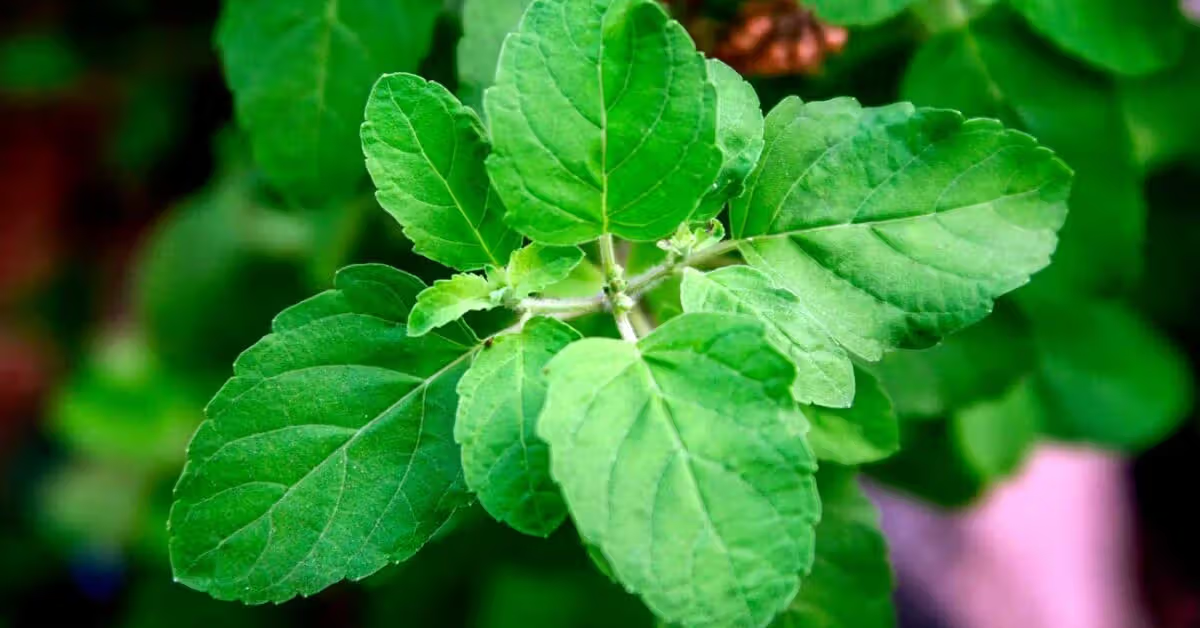Health
Albahaca Morada: The Purple Basil with Health Benefits and Culinary Uses

Introduction: What is Albahaca Morada?
Albahaca morada, often referred to as purple basil, is a unique herb that stands out due to its vibrant purple leaves and aromatic fragrance. This variety of basil is widely used in many culinary and medicinal traditions, especially in Latin America, where it is highly valued for both its flavor and health benefits. Whether you are a food lover, herbal enthusiast, or gardener, understanding albahaca morada and its properties can open up new ways to enhance your meals and well-being.
Overview of Albahaca Morada
Origin and History of Albahaca Morada
Albahaca morada traces its roots back to Southeast Asia, where basil has been cultivated for centuries. However, the purple variety has found a special place in Latin American cultures, where it is often used in a variety of traditional dishes and remedies. In addition to its culinary uses, albahaca morada has been celebrated in folk medicine, particularly in countries like Mexico and Peru.
Where is Albahaca Morada Grown?
Albahaca morada thrives in warm climates and is commonly found in tropical and subtropical regions. It is grown in a variety of countries, from South America to parts of Asia, and it is often cultivated in home gardens due to its easy care and fast-growing nature. The plant does best in areas with plenty of sunlight and well-drained soil, making it a perfect herb for home gardeners who want to add a unique touch to their gardens.
Health Benefits of Albahaca Morada
Nutritional Value of Albahaca Morada
Albahaca morada is not just a flavorful herb; it is also packed with essential nutrients. Rich in vitamins A, C, and K, as well as iron and calcium, it provides a natural boost to your immune system. The presence of antioxidants such as flavonoids and polyphenols helps protect the body from oxidative stress and inflammation.
Antioxidant Properties of Albahaca Morada
One of the standout features of albahaca morada is its antioxidant content. The purple pigments in the leaves, known as anthocyanins, are powerful antioxidants that protect cells from damage caused by free radicals. These compounds may also contribute to reducing the risk of chronic diseases such as heart disease and cancer.
Albahaca Morada for Digestive Health
In traditional medicine, albahaca morada has been used to support digestive health. It has mild anti-inflammatory properties that can help reduce bloating, gas, and stomach discomfort. Regular consumption of this herb may help maintain a healthy digestive tract and improve overall gut health.
Albahaca Morada for Skin Care and Anti-Inflammatory Effects
The anti-inflammatory properties of albahaca morada also extend to skincare. It can be used to treat minor skin irritations and reduce redness and swelling. Some people use it as a natural remedy for acne and other skin conditions due to its ability to fight off harmful bacteria.
Culinary Uses of Albahaca Morada
Albahaca Morada in Traditional Latin American Cuisine
Albahaca morada is a key ingredient in many Latin American dishes. It adds a unique depth of flavor to stews, soups, salads, and sauces. In countries like Mexico and Colombia, it is used to make fresh salsas and season meat dishes. Its distinct purple color also adds a beautiful touch to dishes, making it as much of a visual enhancer as a flavoring agent.
Creative Ways to Use Albahaca Morada in Recipes
Beyond traditional uses, albahaca morada can be incorporated into many modern recipes. Try blending it into pesto for a fresh twist on the classic, or add it to smoothies for a healthy, aromatic boost. You can also make refreshing herbal teas or infuse oils for unique salad dressings and marinades.
How to Incorporate Albahaca Morada into Everyday Meals
Adding albahaca morada to your meals is easy. Use it as a garnish for dishes like pasta, pizza, or even roasted vegetables. You can also sprinkle it on top of soups or blend it into your morning smoothies. Its versatility makes it an excellent addition to any meal, whether you’re cooking something traditional or experimenting with new flavors.
Growing and Cultivating Albahaca Morada
Climate and Soil Requirements for Albahaca Morada
To grow albahaca morada successfully, it’s important to consider its ideal growing conditions. This herb prefers warm, sunny environments with temperatures ranging from 70°F to 85°F (21°C to 29°C). It also requires well-drained, slightly acidic soil to thrive. If you’re growing it in a pot, make sure it has good drainage to prevent waterlogging.
Step-by-Step Guide to Growing Albahaca Morada at Home
Growing albahaca morada is relatively simple. Start by planting seeds or young plants in a pot or garden bed with plenty of sunlight. Water the plant regularly, ensuring the soil remains moist but not soggy. Prune the leaves regularly to encourage healthy growth and prevent flowering, which can reduce the flavor of the leaves. Harvesting the leaves early in the morning when the essential oils are most potent ensures the best flavor.
Common Challenges and Solutions in Growing Albahaca Morada
While albahaca morada is generally easy to grow, it can face some challenges. One common issue is pests such as aphids, which can damage the leaves. To combat this, use organic pest control methods like neem oil or insecticidal soap. Additionally, be mindful of overwatering, as it can lead to root rot. Proper soil drainage is key to preventing this problem.
Albahaca Morada in Traditional Medicine
Folk Remedies Involving Albahaca Morada
Albahaca morada has been used for centuries in folk medicine. In various cultures, it is believed to have properties that help treat conditions like headaches, fever, and cold symptoms. The leaves are often brewed into tea, consumed, or applied as poultices to alleviate symptoms.
How Albahaca Morada Is Used in Natural Healing Practices
In addition to its culinary uses, albahaca morada is considered a powerful natural remedy. It is sometimes used in essential oil form for aromatherapy to reduce stress and promote relaxation. It is also believed to help detoxify the body and support overall wellness by improving circulation and boosting the immune system.
Albahaca Morada: The Purple Basil’s Unique Properties
Differences Between Albahaca Morada and Other Basil Varieties
Albahaca morada is distinct from other types of basil, such as sweet basil or Thai basil, due to its deep purple color and slightly spicy flavor. While most basils have a sweet, peppery taste, albahaca morada offers a more robust, slightly spicy flavor that pairs well with savory dishes. Its vibrant color is not only visually striking but is also a sign of its rich antioxidant content.
How Albahaca Morada’s Color Influences Its Properties
The purple color of albahaca morada is attributed to the presence of anthocyanins, which are potent antioxidants. These antioxidants help protect the body from oxidative damage and may reduce the risk of chronic diseases. The rich pigments also contribute to the herb’s anti-inflammatory effects, making it a valuable addition to both your diet and skincare routine.
Environmental Impact of Albahaca Morada
Sustainable Farming of Albahaca Morada
As the popularity of albahaca morada grows, so does interest in sustainable farming practices. This herb is relatively easy to grow organically, as it does not require heavy pesticide use and thrives in natural, eco-friendly environments. By incorporating sustainable farming practices, albahaca morada can be cultivated in a way that supports both local economies and the environment.
Albahaca Morada and Its Role in Biodiversity
By growing albahaca morada, farmers contribute to biodiversity by adding a new plant variety to the ecosystem. Its cultivation helps support pollinators such as bees and butterflies, which are essential for maintaining a healthy, thriving environment.
Albahaca Morada in Modern Wellness
Albahaca Morada Essential Oils and Aromatherapy
Albahaca morada’s essential oils are becoming increasingly popular in aromatherapy for their calming and relaxing effects. The oils can be used in diffusers or applied topically to promote stress relief and enhance mood. The herb’s fragrance has been shown to help ease anxiety and tension, making it a great addition to your wellness routine.
Albahaca Morada in Detoxification and Cleansing
Albahaca morada is also used in detoxification practices. Its diuretic properties help promote healthy kidney function and flush toxins from the body. Drinking albahaca morada tea or using it in smoothies can aid in cleansing the body, leaving you feeling refreshed and revitalized.
Conclusion: The Future of Albahaca Morada
Albahaca morada is a versatile, health-promoting herb that has much to offer in both culinary and medicinal realms. As more people discover its benefits, the demand for albahaca morada is expected to grow. Its vibrant color, unique flavor, and numerous health properties make it a valuable addition to any kitchen or wellness routine. Whether you’re growing it at home or enjoying it in your favorite dish, albahaca morada is a herb worth embracing.
FAQs
- What are the health benefits of Albahaca Morada? Albahaca morada offers numerous health benefits, including antioxidant properties, digestive support, and anti-inflammatory effects. It is also beneficial for skin health and immune system enhancement.
- How can I use Albahaca Morada in cooking? Albahaca morada can be used in a variety of dishes, from traditional salsas and soups to creative recipes like pesto or smoothies. Its aromatic leaves add a unique flavor to many meals.
- How do I grow Albahaca Morada at home? Albahaca morada thrives in warm, sunny conditions. Plant it in well-drained soil, water regularly, and prune the leaves to encourage healthy growth. It can be grown in pots or garden beds.
- Can Albahaca Morada be used for skin care? Yes, albahaca morada has anti-inflammatory properties that help soothe skin irritations, reduce acne, and promote overall skin health.
- What is the best way to store Albahaca Morada? To store albahaca morada, place it in a jar of water with the stems submerged, or wrap it in a damp paper towel and refrigerate it. It can also be dried for later use.
- Are there any side effects of Albahaca Morada? While albahaca morada is generally safe for most people, excessive consumption may lead to digestive issues. Always use it in moderation and consult with a healthcare professional if you have any concerns.
Health
Chest Pain and Its Connection to Heart Attack and Other Conditions

Chest pain refers to discomfort or pain in the chest area, which can vary widely in intensity, duration, and nature. It sometimes points to serious health concerns, including heart attacks. Here is more information on the connections between chest pain and heart attacks, as well as other possible causes for this symptom:
What Is Chest Pain?
Chest pain is a broad term used to describe any discomfort or ache felt in the chest region. It can manifest in several ways, including a sharp, stabbing sensation, pressure-like discomfort, or a dull ache. The pain can also sometimes radiate to other areas, such as the neck, shoulders, or arms.
Certain forms of this pain may come and go, while others remain persistent. Its location, severity, and type can indicate underlying health problems, though not all chest pain is linked to life-threatening conditions. Consulting a cardiovascular specialist helps determine the causes of this pain and recommends treatment options.
What Causes It?
There are numerous reasons why someone might experience chest pain. Common non-cardiac causes include muscle strain and acid reflux. Musculoskeletal pain may occur due to strained chest muscles or rib injuries. Acid reflux occurs when stomach acid irritates the esophagus, resulting in a burning sensation in the chest.
Other potential causes can be respiratory, such as pneumonia or pleurisy. Pain in the chest can even originate from infections or nerve-related conditions, such as shingles. Because this pain often overlaps in its presentation, it is not always straightforward to identify the precise cause without professional evaluation.
What Is a Heart Attack?
A heart attack occurs when the flow of blood to the heart muscle becomes blocked, causing a portion of the muscle to be deprived of oxygen. This blockage is typically caused by the accumulation of fatty deposits, also known as plaques, within the coronary arteries. These plaques may rupture or trigger blood clots over time, further obstructing blood flow.
What Causes It?
The most common cause of heart attacks is coronary artery disease (CAD). This condition occurs when plaques form along the walls of the coronary arteries, narrowing them and reducing their ability to carry blood efficiently. Risk factors for CAD include high cholesterol, smoking, diabetes, high blood pressure, and a sedentary lifestyle.
Acute triggers, such as physical stress or exertion, may cause a plaque to rupture. This creates a clot that blocks blood flow. Additional factors, such as underlying medical conditions or genetic predisposition, can further contribute to an individual’s risk of experiencing a heart attack.
How Are They Connected?
While not all pain in the chest is a sign of a heart attack, the two are closely linked. Chest pain stemming from cardiac issues often occurs due to restricted blood flow to the heart, as seen in heart attack events. Known as angina, this type of pain can serve as a warning sign of underlying coronary artery disease or an impending heart attack.
Differentiate cardiac-related pain from other causes by its unique presentation. It may feel like a sensation of pressure, heaviness, or tightness, particularly during physical activity. Cardiac pain may also be accompanied by radiating discomfort in the left arm or jaw, nausea, and lightheadedness.
See a Cardiovascular Specialist Now
Understanding the potential causes of chest pain helps you distinguish between minor concerns and conditions that require urgent care. When this pain is unexplained or accompanied by other warning signs, it may point to more serious issues, including the risk of a heart attack. If you suspect a cardiovascular issue, consult a specialist in cardiovascular care today.
Health
What To Expect Before and After Botox Injections

Botox injections are a standard cosmetic treatment, used to reduce the appearance of wrinkles and fine lines. If you’re planning to get Botox for the first time, it’s helpful to know what to expect before and after the procedure. By preparing in advance and understanding the recovery process, you’ll make the process easier. Here’s what to expect at a Botox appointment:
What Happens Before the Visit?
Begin by scheduling a consultation with a licensed healthcare provider. The practitioner will examine the areas you’d like to treat and explain what’s possible based on your skin and muscle structure. This is your chance to:
- Share your goals
- Ask questions
- Learn about your treatment options
Be open about your medical history. Inform them about any allergies, medications, or past reactions to cosmetic treatments. This helps prevent complications and leads to a safer experience. Your provider may also provide you with pre-treatment advice, such as avoiding certain medications or supplements that increase the risk of side effects.
How Do I Prepare Before?
A few days before your appointment, there are some simple steps you can take to prepare. Avoid alcohol, aspirin, and other blood thinners, as they may increase your risk of bruising after injections. If you use skincare products with active ingredients, try temporarily discontinuing their use to reduce skin sensitivity. Also, arrive at your appointment with clean, makeup-free skin.
What Happens During the Visit?
The Botox procedure itself is quick and minimally invasive. After discussing your treatment plan again with the practitioner, they will sterilize the targeted areas and begin the injections. A small needle is used to administer Botox into specific muscles, typically requiring just a few minutes per area.
The discomfort level is typically mild. Ice packs or numbing creams might be applied beforehand if you have concerns about pain. Once the injections are complete, the practitioner will clean the areas and provide you with post-treatment instructions.
What Happens After the Visit?
The recovery process after Botox is straightforward and doesn’t require long downtime. You might be advised to avoid lying down for a few hours or doing strenuous activities that raise your heart rate. These steps help prevent the Botox from spreading to unintended areas. Also, avoid applying heat or massaging your face for at least one day after the treatment, as these can affect the results. For the first 24 hours, stick to a gentle skincare routine to keep your skin calm.
What Results Might I Expect?
Botox results typically begin to appear within a few days, with full effects visible after approximately two weeks. The benefits, such as smoother skin and fewer wrinkles, may last between three and six months. How long it lasts depends on factors like age, metabolism, and lifestyle. Here are some tips to help maximize your results:
- Stay Hydrated: Drink plenty of water before and after your treatment to aid your body’s recovery. Good hydration supports healthy skin.
- Be Patient: Botox takes time to settle, so avoid judging the results right after your appointment. Give your skin time to adjust naturally.
Schedule Your Botox Session
Botox may improve your look by reducing fine lines and wrinkles. Proper preparation and aftercare are helpful for ideal results. Knowing what to do before and after your appointment helps you meet your expectations. With good planning and clear communication with your practitioner, your skin can look and feel rejuvenated. Schedule an appointment today with a medical spa near you.
Health
Living with Chronic Disease: How to Stay Active and Healthy

Living with a chronic disease requires effective management strategies to maintain an active lifestyle. Many people live with conditions such as diabetes, heart disease, arthritis, or autoimmune disorders, and managing these conditions involves collaboration with a healthcare team and making consistent changes to improve health and daily functioning.
Understanding Chronic Disease
A chronic disease is defined as a long-term health condition that persists for three months or more and requires ongoing care and management. These conditions include diabetes, arthritis, lupus, and heart disease, which significantly affects various aspects of a person’s life. They may impact energy levels, physical mobility, and the ability to perform everyday activities, often requiring individuals to adjust their routines and priorities. Unlike short-term illnesses, chronic diseases don’t simply resolve with time or treatment; instead, they tend to fluctuate, with periods of improvement followed by potential flare-ups or worsening symptoms.
Developing daily management strategies can improve quality of life. These strategies also foster a sense of control and balance. By focusing on proactive management and self-care, individuals can better navigate the challenges of living with a chronic disease.
Managing Medications
Taking your medication as prescribed helps manage symptoms and boost energy levels. Tools like pill organizers or medication reminder apps may help you stay consistent with your medication regimen. Build a strong relationship with your pharmacist, they are able to explain the potential side effects and the proper way to take your medications. It may be beneficial to keep an updated list of your medications, including dosages and prescribing doctors. Bring this list to every appointment so your care team has a complete view of your treatment plan.
Prioritizing Nutrition
A healthy diet plays a key role in managing chronic disease. Focus on whole foods, such as lean proteins, healthy fats, complex carbohydrates, and plenty of vegetables. These nutrient-dense options provide steady energy throughout the day and help reduce inflammation in the body. They also support the body’s recovery processes to help you feel your best.
Working with a dietitian who understands your condition may be helpful. A dietitian can create a personalized meal plan tailored to your needs and goals. They help guide you in making healthier food choices while addressing any dietary restrictions or challenges. This customized approach typcially makes managing your condition easier.
Scheduling Checkups
Regular medical appointments help manage chronic diseases. Preventive care helps catch potential issues early, reducing the risk of complications. Follow-up visits confirm your treatment plan remains effective and tailored to your needs.
Bring an updated medication list, activity log, and any concerns to your appointments. These details help your doctor provide the best care and address any changes in your condition. Being prepared allows for more productive and focused conversations with your provider.
Your care team may include specialists like rheumatologists, cardiologists, or dietitians. Providers such as physical therapists or counselors may also play a role in your care. Ask about telehealth options if you need more convenient ways to attend appointments.
Take Control Today
Living with a chronic disease takes effort, but the benefits are worth it. Start with small steps, like taking a short walk, preparing a nutritious meal, or scheduling a checkup, and take pride in every milestone you achieve. Progress may not always be linear, and that’s okay. Focus on what you can control, adapt when needed, and remember that your chronic condition is just one chapter of your story. With the right strategies and support, you can lead a healthy and fulfilling life.
-

 Travel3 years ago
Travel3 years agoNEW ZEALAND VISA FOR ISRAELI AND NORWEGIAN CITIZENS
-

 Technology3 years ago
Technology3 years agoIs Camegle Legit Or A Scam?
-

 Uncategorized3 years ago
Uncategorized3 years agoAMERICAN VISA FOR NORWEGIAN AND JAPANESE CITIZENS
-

 Health2 years ago
Health2 years agoHealth Benefits Of Watermelon
-

 Home Improvement5 months ago
Home Improvement5 months agoArtificial Grass Designs: Perfect Solutions for Urban Backyards
-

 Fashion2 years ago
Fashion2 years agoBest Essentials Hoodies For Cold Weather
-

 Uncategorized3 years ago
Uncategorized3 years agoHow can I write a well-structured blog post?
-

 Technology1 year ago
Technology1 year agoImagine a World Transformed by Technology and Innovation of 2023-1954














